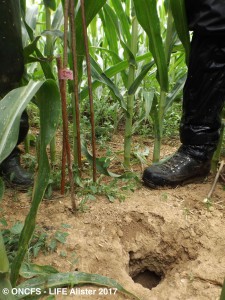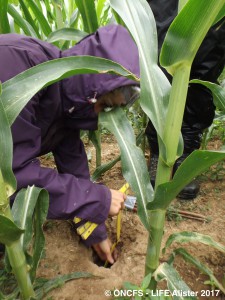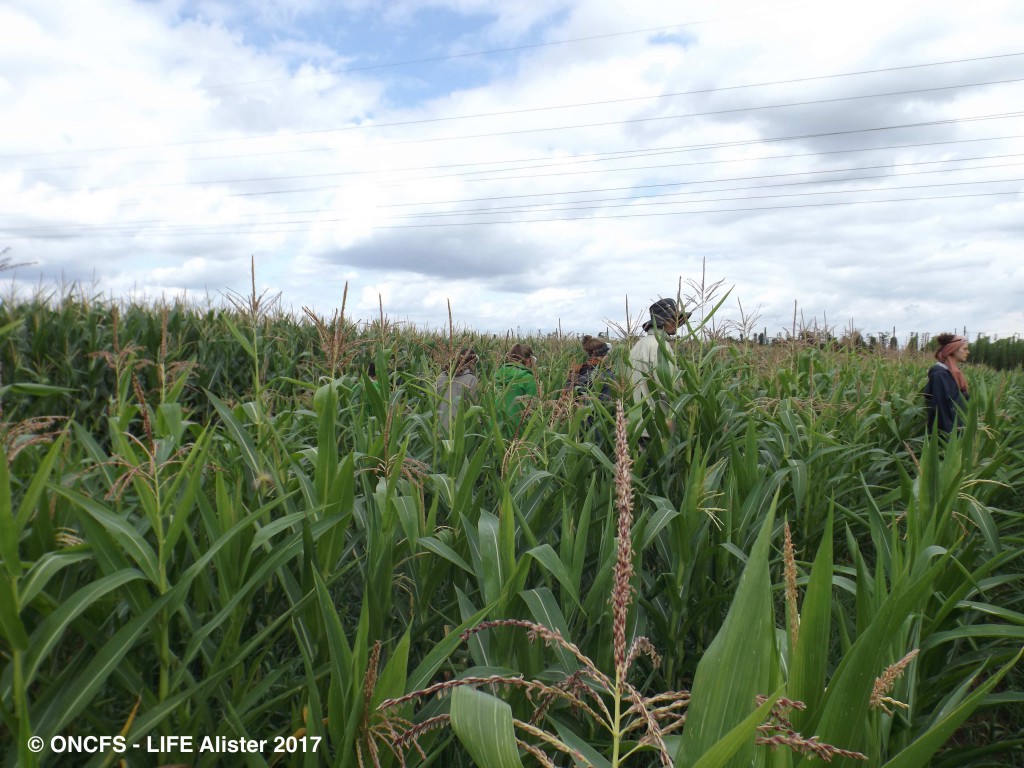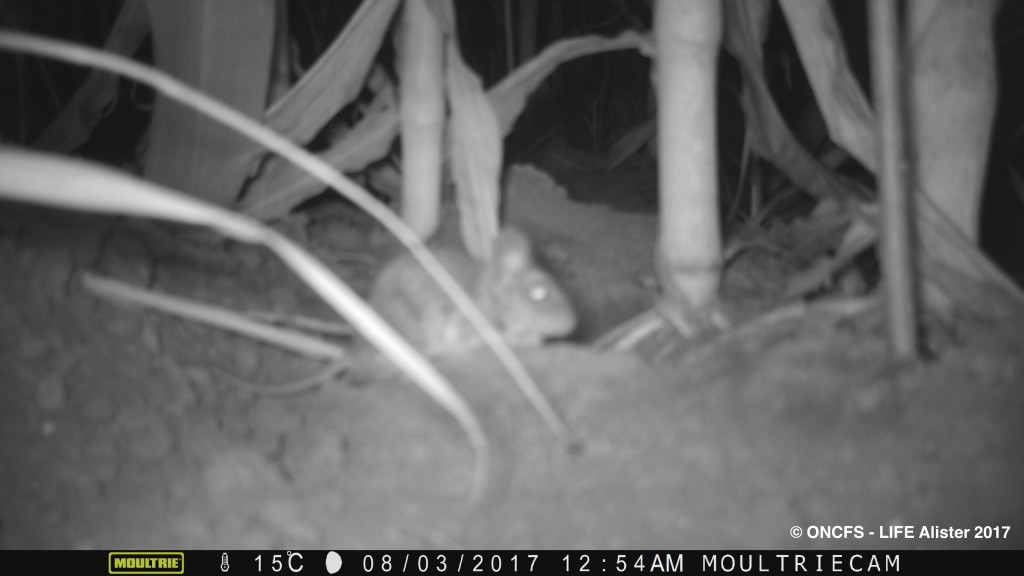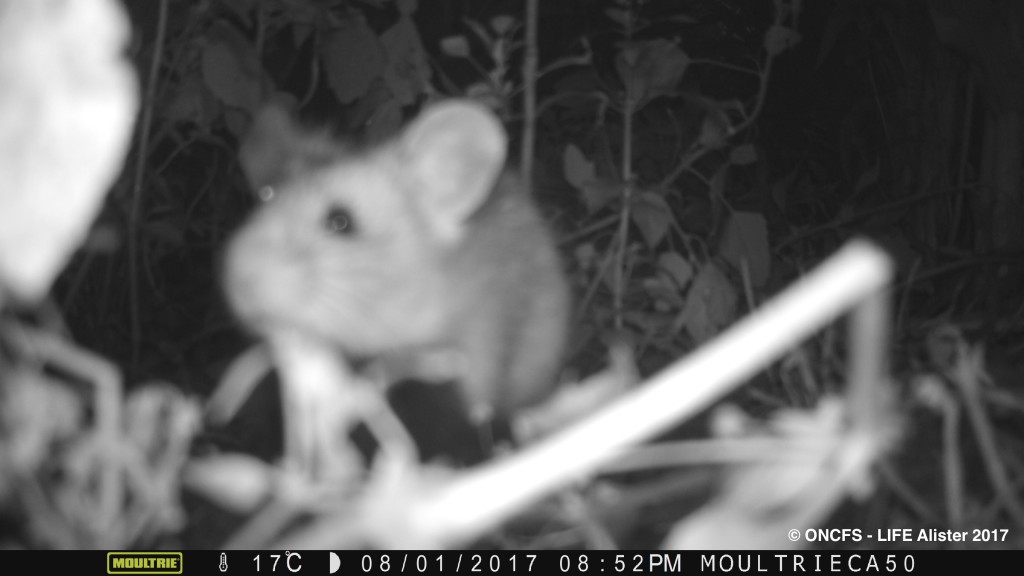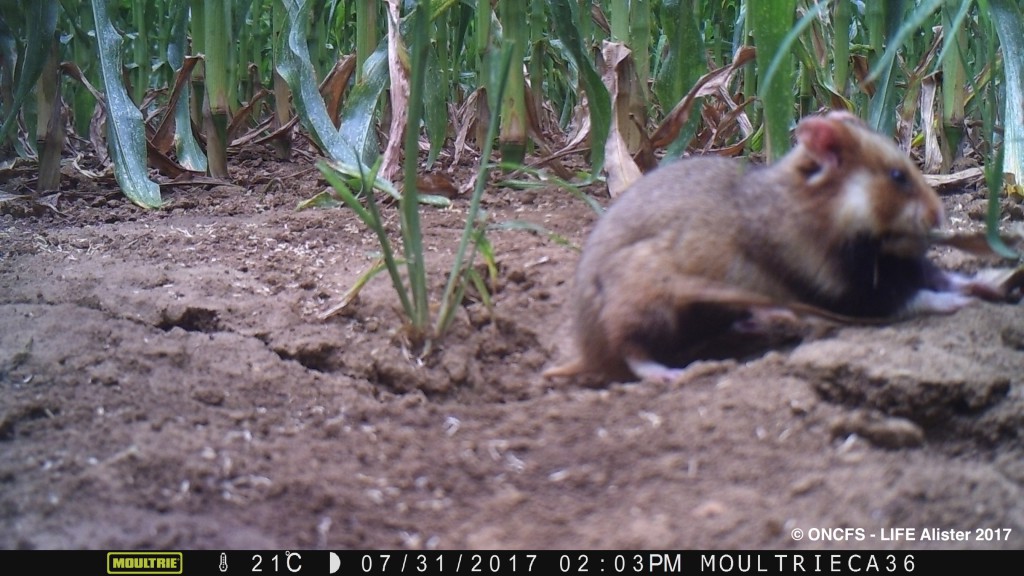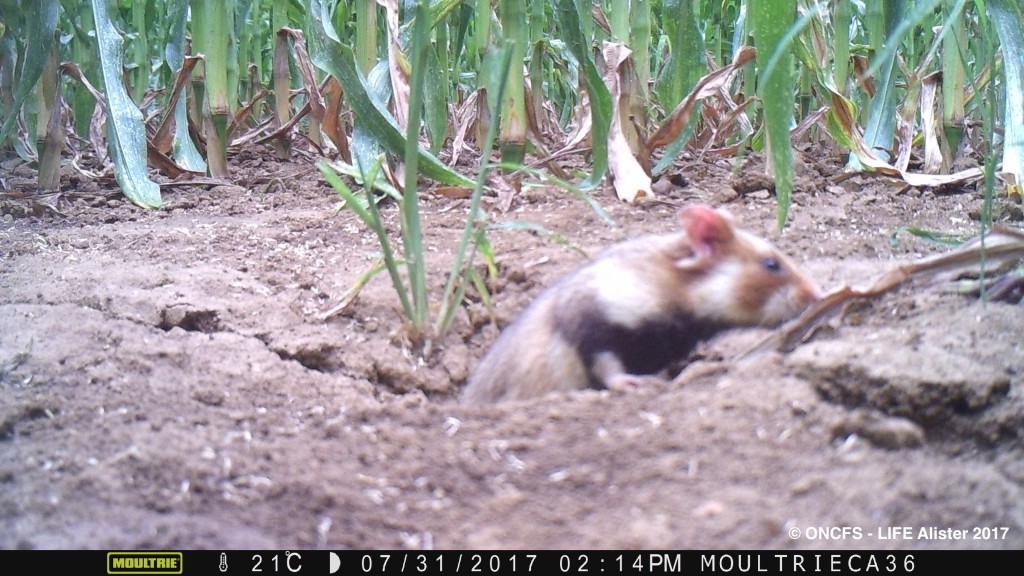Looking for burrows
9 octobre 2017Following the period of capture in spring (read about this here: http://www.grand-hamster-alsace.eu/suivi-grands-hamsters-passe-capture/), European Hamsters are monitored on the experimental plots of LIFE Alister by searching for ‘active’ burrows.
On 25 and 26 July 2017, eight contractual employees joined the LIFE teams of the ONCFS (French National Hunting and Wildlife Agency) to check for the presence of the species in the eight experimental plots (six in maize and two in wheat).
Every row of maize (sometimes as tall as 2 m!) was searched for European Hamster burrows. 134 burrows were scrutinised in the minutest detail: the diameter and depth of the hole, slope of the tunnel, presence of excavated earth, droppings, signs of feeding, etc. For the most circumspect burrows, a camera trap was set up opposite the entrance to ascertain if the burrow was in fact that of a European Hamster and/or if it was still occupied. The teams were able to observe three hamsters outside their burrow!
In total, 45 burrows considered as active and occupied by European Hamsters were recorded. To assess the population growth on these plots in real terms, it is now essential to evaluate the remaining burrows depending on the results of the camera traps. Following this, the list of the burrows from spring will be compared with these results, following the same procedure as in 2015 for maize. The aim is to determine if there is greater activity in the improved plots (presence of plant cover between the rows of maize) than in the plots of maize grown in the traditional way.
Unfortunately, this burrow was occupied by a field mouse!
But this one was indeed a hamster burrow!

